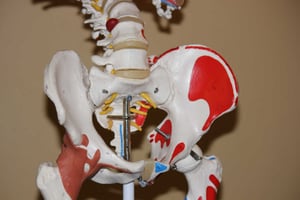Living with a chronic illness can be an arduous and life-altering journey. These conditions, often...
Osteoporosis: Your Bones for a Healthier Future
Osteoporosis is a silent, often misunderstood condition that affects millions of people around the world. This bone disease weakens your bones, making them fragile and more prone to fractures. It is often referred to as the "silent disease" because it progresses without any obvious symptoms until a fracture occurs. In this article, we will delve into what osteoporosis is, its causes, risk factors, diagnosis, prevention, and management, empowering you to take charge of your bone health.
What is Osteoporosis?
Osteoporosis is a medical condition that leads to the weakening of bones, making them fragile and more susceptible to fractures. The term "osteoporosis" comes from the Greek words "osteo," meaning bone, and "porosis," meaning porous. Essentially, it describes bones that have lost density and strength, becoming porous and brittle.
Osteoporosis is a medical condition characterized by the weakening of bones, making them fragile and more susceptible to fractures. It results from a decrease in bone density and mass, often leading to a porous and brittle skeletal structure. This condition is particularly prevalent among aging populations, as bone density tends to decrease with age. The gradual loss of bone tissue can be attributed to various factors, including hormonal changes, insufficient intake of calcium and vitamin D, as well as a sedentary lifestyle.
The consequences of osteoporosis can be severe, as even minor falls or stress on the bones can cause fractures, especially in the spine, hip, and wrist. Women, especially postmenopausal women, are at a higher risk due to the decline in estrogen levels, which plays a crucial role in maintaining bone density. Early detection and management of osteoporosis are essential to prevent fractures and maintain overall bone health. This often involves lifestyle modifications, dietary changes, and, in some cases, medical interventions to enhance bone strength. Regular exercise, a balanced diet rich in calcium and vitamin D, and medications prescribed by healthcare professionals are integral components of managing osteoporosis and mitigating its impact on skeletal health.
Causes and Risk Factors
Understanding the causes and risk factors for osteoporosis is crucial for prevention and early intervention:
-
Age: Osteoporosis is more common in older adults because bone density naturally decreases with age.
-
Gender: Women are at a higher risk, especially during and after menopause when estrogen levels decline.
-
Family history: A family history of osteoporosis may increase your risk.
-
Hormonal changes: Conditions like hyperthyroidism, hypogonadism, and hormone imbalances can contribute to osteoporosis.
-
Dietary factors: Inadequate calcium and vitamin D intake can weaken bones.
-
Sedentary lifestyle: Lack of weight-bearing exercise can lead to bone loss.
-
Medications: Long-term use of certain medications, like corticosteroids, can increase the risk.
-
Smoking and excessive alcohol consumption: These habits can weaken bones.
Diagnosis
Osteoporosis can be diagnosed through bone density tests like Dual-energy X-ray Absorptiometry (DXA or DEXA) scans, which measure bone density and assess fracture risk. It's important to discuss your risk factors with a healthcare professional who can recommend appropriate tests and provide guidance based on your individual situation.
Prevention
Prevention is key when it comes to osteoporosis:
-
Diet: Consume a balanced diet rich in calcium, vitamin D, and other nutrients that support bone health. Dairy products, leafy greens, and fortified foods can be beneficial.
-
Exercise: Engage in weight-bearing and muscle-strengthening exercises, such as walking, jogging, and resistance training.
-
Lifestyle modifications: Avoid smoking and limit alcohol consumption.
-
Fall prevention: Make your home safer to reduce the risk of falls, which can lead to fractures.
-
Medications: In some cases, healthcare professionals may recommend medications to slow bone loss or increase bone density.
Management
For those already diagnosed with osteoporosis, management is essential to maintain bone health:
-
Medications: Doctors may prescribe medications like bisphosphonates, hormone therapy, or other treatments to slow bone loss and reduce fracture risk.
-
Nutrition: Continue to focus on a diet rich in bone-healthy nutrients.
-
Exercise: Incorporate regular physical activity to maintain bone strength and balance.
-
Regular check-ups: Monitor your bone health with follow-up appointments and bone density tests as recommended by your healthcare provider.
Final Words
Osteoporosis is a condition that affects a large portion of the population, and its impact on daily life can be significant. However, with early detection, preventative measures, and proper management, you can take control of your bone health and reduce the risk of fractures. It's never too early or too late to start taking steps to protect your bones and maintain a healthier, more active lifestyle. Talk to your healthcare provider about your risk factors and a personalized plan for better bone health.
Other Languages articles:
Osteoporosis: Todo lo que Debes Saber sobre esta Enfermedad Ósea Silenciosa
OSTEOPOROSI: TUTTO QUELLO CHE C'È DA SAPERE SU QUESTA MALATTIA OSSEA SILENZIOSA
Ostéoporose : tout ce qu'il faut savoir sur cette maladie osseuse silencieuse
Osteoporose: Alles, was Sie über diese stille Knochenkrankheit wissen müssen
Osteoporose: tudo o que precisa de saber sobre esta doença óssea silenciosa


